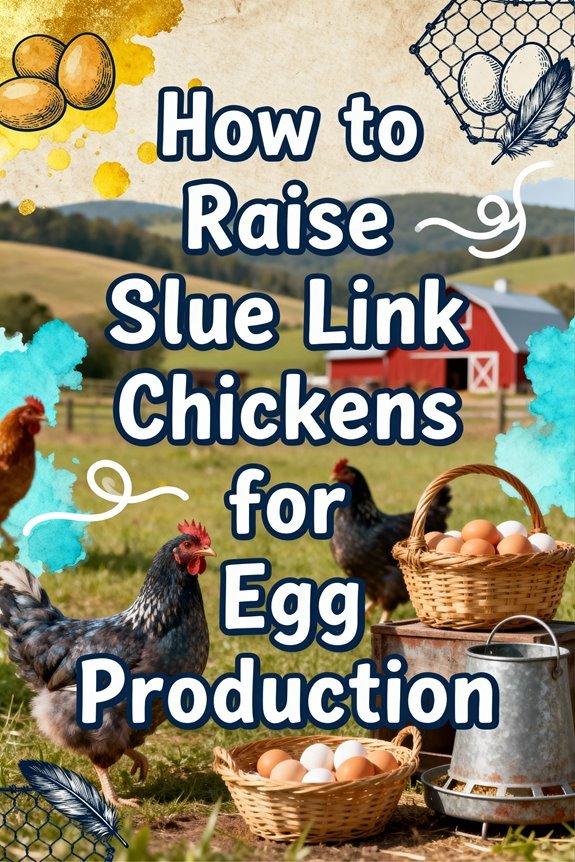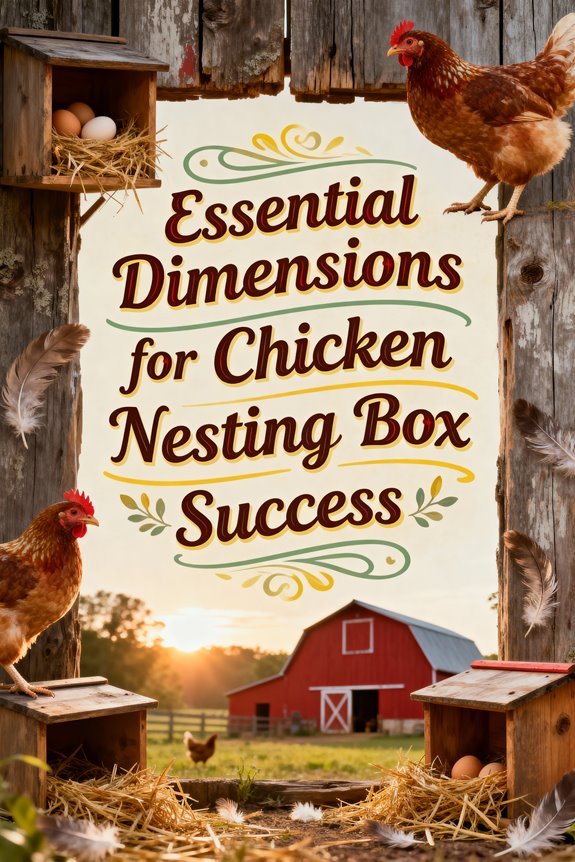Can Chickens Safely Eat Wild and Store-Bought Mushrooms?
While you can safely feed your chickens store-bought mushrooms like button, cremini, and portobello varieties, wild mushrooms pose serious health risks to your flock. Wild varieties can cause neurological damage, organ failure, and death due to their toxicity. If you choose to supplement with mushrooms, thoroughly wash and cook store-bought options, serving them as an occasional treat at no more than 10% of their diet. Understanding proper preparation and safety protocols will help protect your flock’s health.
Understanding the Risks of Wild Mushrooms for Chickens
While wild mushrooms may seem harmless, they pose significant health risks to chickens, potentially causing severe neurological damage, organ failure, and death. You’ll notice early warning signs if your chickens have consumed toxic mushrooms, including vomiting, diarrhea, incoordination, and seizures. These wild mushroom dangers can lead to devastating consequences, with some toxins triggering hepatic necrosis and kidney failure. Like toxic fruit pits, wild mushrooms contain compounds that can be lethal to your chickens. Just as persin toxicity can harm poultry, mushroom poisoning requires immediate veterinary attention.
Even if your chickens survive initial poisoning, they may suffer lasting organ damage. The challenge lies in accurate identification – wild mushrooms include numerous species with subtle differences that are difficult to distinguish. Given the severe chicken health risks and complexity of mushroom identification, you should immediately remove any wild mushrooms from your flock’s foraging areas and prevent access to areas where they commonly grow. Regular inspection of free-range areas helps protect chickens from accidental mushroom consumption.
Safe Store-Bought Mushroom Options for Your Flock
Although store-bought mushrooms offer a safer alternative to wild varieties, you’ll need to follow specific preparation protocols to protect your flock’s health. Common mushroom varieties like white button, cremini, and portobello are generally safe when properly cleaned, while exotic options require careful introduction and monitoring. The vitamin B content in mushrooms supports healthy metabolism and growth in chickens.
You’ll need to implement thorough washing techniques to remove pesticides and chemical residues before feeding. Cook mushrooms lightly without oils, butter, or seasonings to improve digestibility. Prioritize organic sources to minimize chemical exposure risks. Don’t let mushrooms become a dietary staple – they provide minimal nutritional value and should remain an occasional treat. Remove any mushrooms from free-range areas to prevent your chickens from developing foraging habits that could lead to wild mushroom consumption.
Essential Nutrition Benefits of Feeding Mushrooms
Five key nutritional benefits make mushrooms a valuable dietary supplement for chickens. First, their rich amino acid profile accelerates muscle development and improves carcass quality. Second, B-complex vitamins enhance metabolic efficiency and feed utilization across mushroom varieties. Third, essential minerals like phosphorus, calcium, and iron support bone strength, eggshell formation, and oxygen transport. Fourth, bioactive compounds including β-glucans and polyphenols strengthen immune function and reduce pathogenic bacteria, decreasing antibiotic dependence. Fifth, antioxidant properties protect against cellular damage and environmental stress. Similar to fresh shrimp feeding, mushrooms should be offered in moderation as a nutritious occasional treat. Numerous studies have demonstrated that chickens fed shiitake and portobello mushrooms show particularly strong health improvements. When offering mushrooms as treats, ensure they don’t exceed 15% of total diet to maintain proper nutrition. Nutritional comparisons show that mushroom-supplemented diets lead to better growth rates, enhanced immunity, and improved overall health markers compared to standard feeds. These benefits make mushrooms an excellent addition to your flock’s diet.
Signs of Mushroom Poisoning in Chickens
Recognizing mushroom poisoning symptoms in chickens requires careful observation of both early and progressive clinical signs. Initial mushroom toxicity symptoms typically emerge within minutes to 12 hours post-ingestion, starting with gastrointestinal distress including watery diarrhea, vomiting, and abdominal pain. You’ll notice behavioral changes like lethargy, droopiness, and ruffled feathers. Similar to human cases, any symptoms appearing after 6 hours could indicate severe poisoning requiring immediate veterinary attention.
Neurological effects develop within 15 minutes to 2 hours, manifesting as confusion, incoordination, and muscle twitching. More severe cases progress to liver and kidney damage, indicated by jaundice and changes in urination patterns. Watch for respiratory distress, including wheezing and coughing, along with cardiovascular symptoms like abnormal heart rhythms. In laying hens, you may observe reduced egg production. These signs can worsen rapidly, potentially leading to multi-organ failure if left untreated.
Best Practices for Mushroom Safety in Free-Range Areas
Protecting chickens from mushroom poisoning requires implementing thorough safety measures in free-range environments. You’ll need to conduct regular inspections of grazing areas, applying mushroom identification techniques to detect and remove potentially toxic species. Pay special attention after rainfall or in humid conditions when fungal growth accelerates. Consider scheduling inspections during daylight hours when hawks and owls are most active, allowing you to monitor both predators and mushroom hazards simultaneously. A secure hardware cloth barrier around grazing areas provides essential protection while allowing chickens to forage safely.
Maintain consistent free range supervision and limit access to areas with dense mushroom populations. You should rotate grazing zones to reduce exposure risk and keep soil well-drained to discourage excessive fungal growth. If you’re supplementing your chickens’ diet with mushrooms, stick to commercial varieties like button, oyster, or portobello mushrooms that are cultivated for human consumption. Remember to clean these thoroughly before feeding and offer them only as occasional treats, not dietary staples. Mixing mushrooms with regular chicken feed provides a balanced approach to nutrition while maintaining dietary variety.
How to Properly Prepare Mushrooms for Chickens
Safe preparation of mushrooms for chickens begins with selecting commercially grown varieties like button, portobello, or oyster mushrooms. Make certain proper mushroom storage by keeping them refrigerated and using them within a week of purchase to maintain freshness and nutritional value. Contaminated or moldy mushrooms can cause respiratory distress in chickens, leading to open-mouth breathing and other health issues.
Consider adding mushrooms to homemade flock blocks for an extra nutritional boost your chickens will love. When preparing mushrooms, cut them into small, manageable pieces that your chickens can easily consume and digest. Cook all mushrooms for at least ten minutes to ensure they are thoroughly cooked and safe for consumption. You’ll find several effective cooking techniques: sautéing in olive oil, steaming, or boiling. For older mushrooms with less moisture, use a dry sauté method, while fresh, water-filled specimens benefit from simmering in liquid. Mix the prepared mushrooms with regular feed as an occasional treat, making certain they don’t exceed 10% of the total diet. Never serve wild mushrooms, as they pose significant health risks to your flock.
Natural Foraging Behavior and Mushroom Selection
Chickens possess complex foraging instincts that influence their interactions with mushrooms in natural settings. While they’ll naturally peck at various mushrooms during their foraging behavior, you shouldn’t rely on their ability to distinguish safe specimens from toxic ones. Research shows their mushroom selection appears random rather than selective, with no evidence they can detect harmful species by smell or taste.
You’ll notice your chickens encounter more wild mushrooms in moist, shaded areas, particularly after rainfall and near decaying wood. While they may find edible varieties like Chicken of the Woods, they’re equally likely to consume toxic species. Their inability to detoxify many fungal compounds makes them especially vulnerable to poisoning, so you’ll need to monitor their foraging areas carefully to prevent access to potentially dangerous mushrooms. Even edible mushrooms like Chicken of the Woods should only be harvested from dead trees or logs to ensure safety for both humans and animals. Just as pine shavings toxins can harm chickens’ respiratory systems, certain mushrooms can cause severe health issues when consumed. If your chicken shows signs of fungal infection after consuming mushrooms, applying miconazole cream under veterinary guidance may help treat external symptoms.
Creating a Balanced Diet With Mushroom Supplements
When incorporating mushrooms into your chickens’ diet, ideal supplementation requires careful consideration of both nutritional content and dosage levels. Research indicates best results with oyster mushroom powder at 20 g/kg of feed, though benefits vary by mushroom varieties and feeding phase. Adding maitake mushrooms can help with immune system support through their ability to increase lymphokine production.
For dietary integration, select mushrooms rich in essential amino acids and bioactive compounds like β-glucans and polyphenols. Common edible species like Pleurotus ostreatus and medicinal varieties such as Lion’s Mane offer immune-boosting properties and support gut health. You’ll want to monitor your flock’s response to supplementation, as benefits may be more pronounced during starter and grower phases. During hot summer months, combine mushroom supplements with fresh cantaloupe to provide additional hydration and immune support.
Remember to use only verified safe mushrooms and maintain strict quality control. Commercial mushroom by-products can provide a cost-effective alternative while ensuring consistent nutritional value. Ensure mushroom supplements complement a complete feed containing proper protein levels of 16-18% for optimal bird health.
Seasonal Considerations for Mushroom Management
Seasonal awareness plays an essential role in managing mushroom exposure for your flock. You’ll need to conduct frequent seasonal inspections after rainfall, when wild mushrooms can emerge overnight, particularly during spring through fall. September and October present heightened risks, as many species, including toxic look-alikes, thrive in these months.
During wet seasons, implement protective measures by restricting free-range access and removing leaf litter where fungi might sprout. Regular monitoring practices should be integrated into your pest management routine, similar to checking for mites and flies. When harvesting safe varieties like Chicken of the Woods for supplements, cut cleanly from dead wood only, selecting young specimens during peak fall growth. Store properly dried mushrooms to extend their supplemental use throughout the year. Remember that mushroom toxicity can vary by maturation stage, making accurate identification vital for your flock’s safety.



